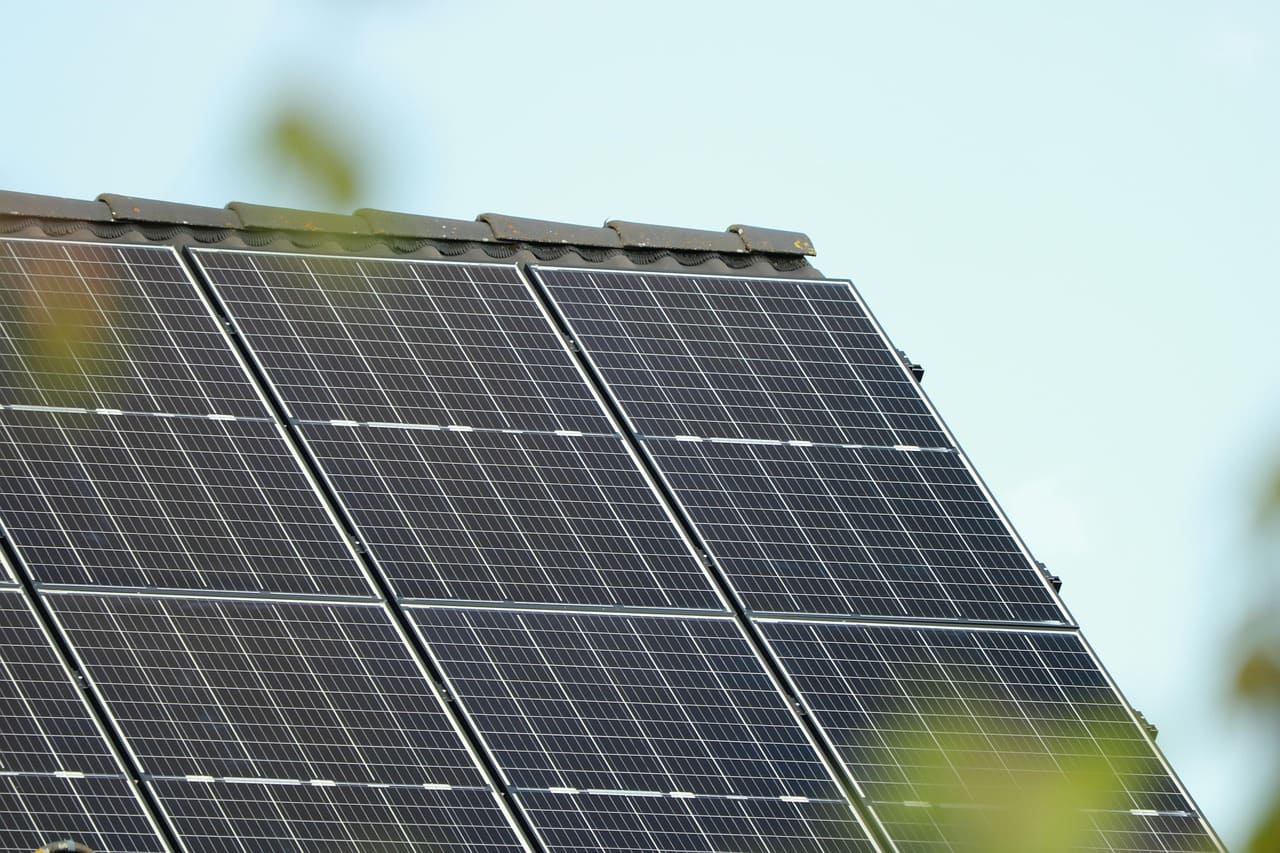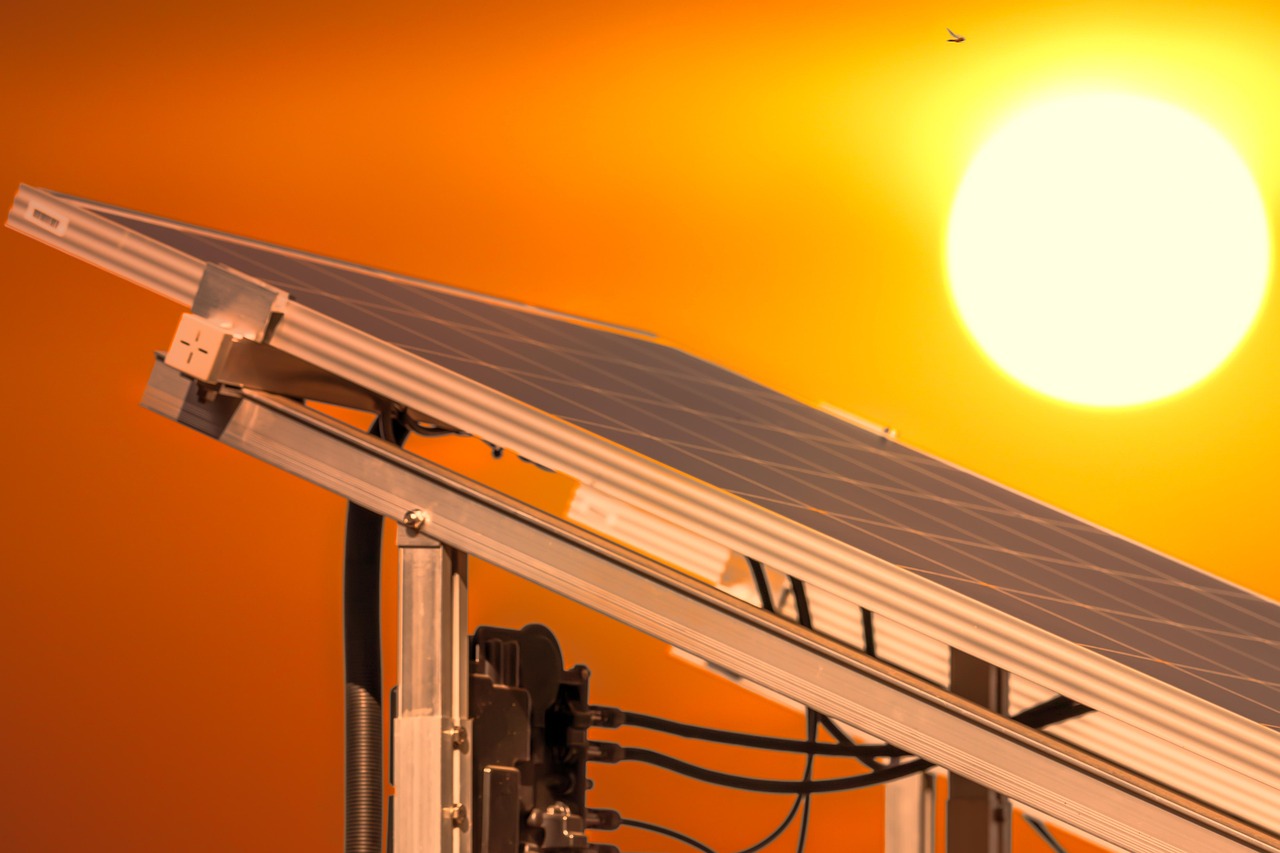

Solar panels are mounted on roofs using specialized attachment systems that vary by roof type, including asphalt shingles, metal, tile, and flat roofs. The mounting method directly impacts system durability, waterproof protection, and long-term performance. Common attachment systems include IronRidge FlashFoot² for asphalt shingles, S-5! clamps for standing seam metal roofs, Pegasus Scissor Mounts for tile roofs, and ballasted racking for flat commercial roofs.
Choosing the right solar panel mounting system depends on your roof material, age, structural capacity, and whether penetrations are acceptable. Rail-based mounting systems allow panel tilting for optimal energy capture on flat roofs, while rail-less mounting offers faster installation and better weight distribution on sloped metal roofs. Non-penetrating options like clamp systems and ballasted racks preserve roof warranties, while flashing-based attachments provide secure waterproof seals for shingle and tile roofs.
Professional solar installers evaluate roof pitch (avoiding slopes steeper than 40 degrees), available surface area, sun exposure (5-6 hours daily minimum), and roof condition before recommending attachment methods. Roofs older than 15 years often require replacement before solar installation to avoid reinstallation costs. Understanding these mounting options ensures your solar investment delivers reliable energy production for 25-30 years while maintaining roof integrity, and homeowners can explore available federal tax credits to maximize their return on investment.
Review the primary attachment methods below and their ideal applications.
Installation approach: Sealed flashing components slide beneath shingles, secured with reinforced lag bolts driven into roof rafters.
Performance advantages: Purpose-engineered for asphalt shingle applications, preventing water intrusion while distributing structural loads uniformly.
Optimal applications: Traditional residential properties with standard asphalt shingle roofing.
Installation approach: Remove individual tiles and install waterproof flashing-mount assemblies, preserving removed tiles as replacement inventory.
Performance advantages: Minimizes damage to fragile clay or Spanish tile materials while maintaining spare tiles for future maintenance needs.
Optimal applications: Clay or concrete tile roofing, particularly aging or brittle installations.
Installation approach: Specialized hook fasteners secure mounting hardware while gently lifting or adjusting tile positioning.
Performance advantages: Delivers waterproof, minimal-impact connections where complete flashing replacement proves impractical.
Optimal applications: Stone-coated steel roofing or tile configurations where hook-based systems offer maximum efficiency.
Installation approach: Integrated anchoring systems designed for new roof installations or re-roofing projects, establishing robust waterproof connections.
Performance advantages: Unifies solar mounting with building waterproofing for extended roof protection.
Optimal applications: Flat roof surfaces, especially during scheduled re-roofing work.
Installation approach: Clamps attach directly to raised standing seams without penetrating metal roofing material.
Performance advantages: Zero roof penetrations preserve manufacturer warranties and structural integrity completely.
Optimal applications: Standing seam metal roofs prioritizing watertight protection and accelerated installation.
Installation approach: Weighted ballast blocks secure panel arrays without roof penetrations.
Performance advantages: Significantly reduces or eliminates drilling requirements while maintaining system stability.
Optimal applications: Expansive flat commercial roofs structurally capable of supporting additional ballast weight.

Each roof presents unique characteristics, requiring tailored solar system approaches. Proper attachment methods deliver:
At Solar Permit Solutions, we evaluate your roof type, structure, and condition to recommend the best attachment solution. With decades of experience across thousands of installations, we make sure your solar investment is built to last. According to the National Renewable Energy Laboratory, proper mounting techniques are essential for maximizing system performance and longevity.
Successful solar panel installation on commercial and residential roofs depends heavily on selecting the right attachment method and understanding your specific roof type. Whether you're working with asphalt shingles, metal panels, tile roofing, or flat commercial surfaces, each material demands a tailored approach to ensure waterproof integrity, structural stability, and long-term performance.
The choice between rail-based and rail-less mounting systems, along with specialized attachment hardware like clamps, hooks, or ballasted systems, directly impacts installation time, cost, and system efficiency. By carefully evaluating factors such as roof age, pitch, material composition, available space, and sun exposure, property owners can make informed decisions that maximize energy production while protecting their roofing investment. Resources like Green Building Advisor and ENERGY STAR provide valuable guidance on sustainable building practices.
At Solar Permit Solutions, we evaluate your roof type, structure, and condition to recommend the best attachment solution. With decades of experience across thousands of installations, we make sure your solar investment is built to last. Proper planning and professional installation ensure your solar system delivers reliable, cost-effective energy for 25-30 years or more, contributing to both environmental sustainability and energy independence, as highlighted by the International Energy Agency.
What roof types are best for solar panel installation?
Asphalt shingle, metal, and standing seam roofs are ideal for solar installations due to their durability and compatibility with various mounting systems. Metal roofs, particularly standing seam designs, offer the advantage of clamp-based attachments that require zero roof penetrations. Asphalt shingles work well with flashing-based systems that create waterproof seals. Avoid installing solar panels on fragile materials like clay or slate tiles unless you're prepared for higher costs due to specialized installation requirements and potential tile replacement needs. The American Solar Energy Society provides additional research on optimal roof materials for solar applications.
How do I know if my commercial roof can support solar panels?
Assess three critical factors: roof age, structural capacity, and material condition. Roofs older than 15 years may need replacement before solar installation to avoid paying for installation twice. Have a structural engineer evaluate whether your roof can handle the additional weight, typically 3-5 pounds per square foot for standard systems or more for ballasted installations. Check for existing damage, sagging, or water infiltration that could compromise solar panel performance. Commercial flat roofs in good condition under 10 years old generally proceed without issues. Understanding supply side vs. load-side connections is also crucial for commercial projects, and organizations like the World Bank offer insights into large-scale solar infrastructure planning.
What's the difference between rail and rail-less solar mounting systems?
Rail mounting uses metal framework attached to the roof, with solar panels mounted onto these rails. This method allows panel tilting for optimal energy capture on flat roofs but requires more installation time and planning around obstructions. Rail-less mounting attaches panels directly to the roof using existing roof ribs as support structure, eliminating separate rail systems. Rail-less installations weigh less, install faster, and distribute weight more evenly, but don't allow panel angle adjustment, making them unsuitable for flat roofs where the existing pitch doesn't support efficient solar exposure. Proper wire management and conduit practices are essential regardless of mounting type.
Can solar panels be installed on flat commercial roofs?
Yes, flat roofs accommodate solar panels through two primary methods. Ballasted racking systems use weighted blocks to secure panels without roof penetrations, ideal for large commercial buildings with adequate structural support. Alternatively, specialized mounting brackets or tilt frames position panels at optimal angles for maximum sun exposure. Flat roofs require careful evaluation of weight capacity, drainage patterns, and existing rooftop equipment. Always use rail-based mounting on flat surfaces since rail-less systems cannot tilt panels to capture sufficient sunlight. Off-grid solar system design may also be considered for remote commercial buildings. The IEEE Power & Energy Society publishes technical standards that guide commercial solar installations.
Will installing solar panels void my roof warranty?
Not necessarily; it depends on your attachment method and warranty terms. Standing seam metal roofs with clamp-based S-5! Systems typically maintain full warranty coverage since they create zero penetrations. For other roof types, work with experienced installers who use manufacturer-approved flashing systems and follow proper installation protocols. Many roofing manufacturers offer solar-friendly warranties or specific guidelines for solar installations. Always review your existing roof warranty before installation and have your solar contractor coordinate with your roofing manufacturer to ensure compliance and warranty preservation. Understanding solar permit expediting can help streamline the approval process while maintaining warranty compliance. Additionally, familiarizing yourself with solar rapid shutdown requirements and proper three-line diagram documentation ensures your installation meets all code requirements. The EPA's Green Power Markets initiative supports environmentally responsible solar installations, while local solar permitting processes vary by jurisdiction.
For those considering a DIY approach, review our guide on building your own home solar system, though professional installation is recommended for optimal results. Learn more about supply-side connections and visit our blog or contact us for personalized guidance.
We are dedicated to providing top-notch solar permit services to homeowners, business owners, DIY, and solar installers. Contact us today.